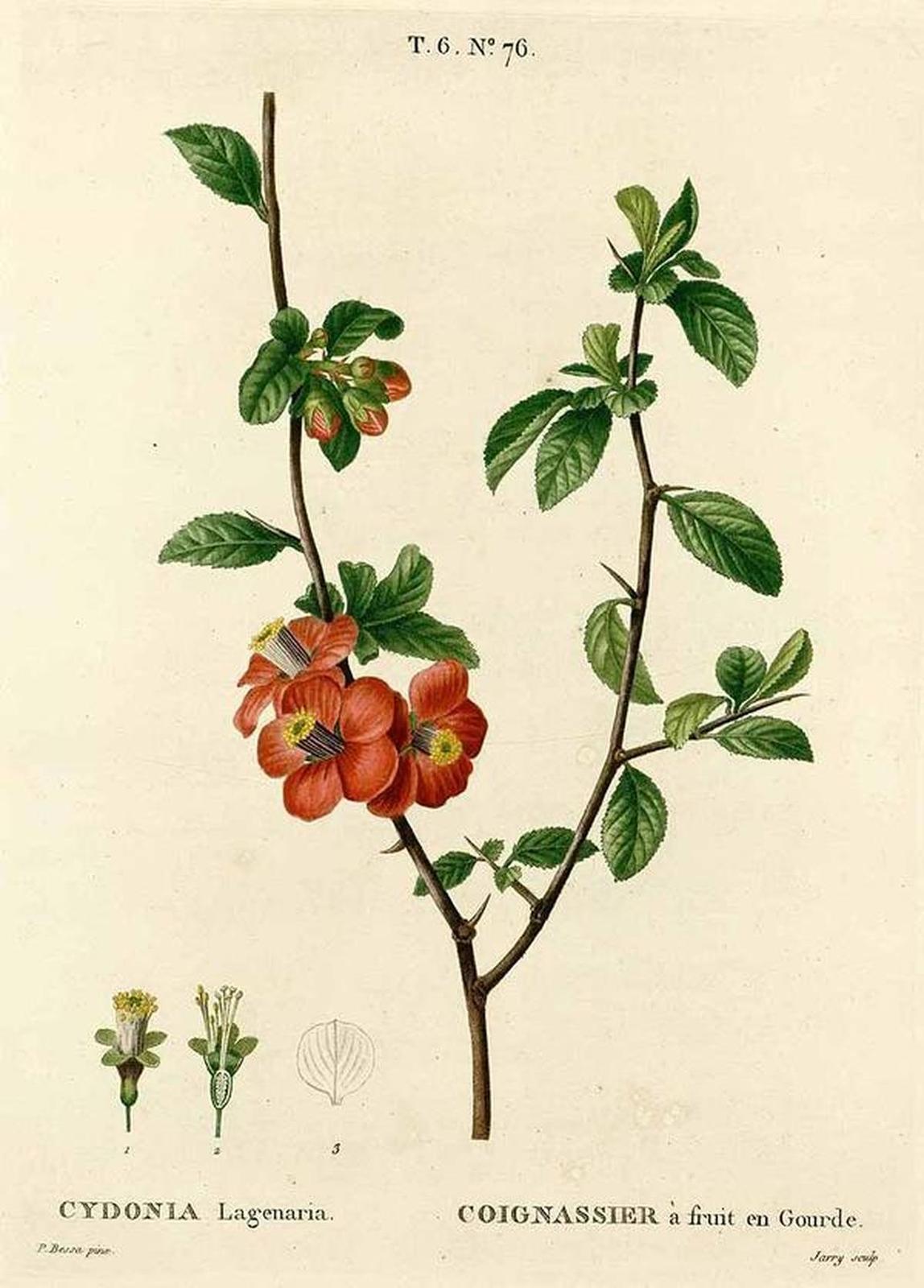Chaenomeles speciosa (Sweet) Nakai
RosaceaeEl membrillero japonés es un arbusto de la familia de las rosáceas. El nombre genérico deriva de chaino, abrirse, y meles, manzana: la manzana que se abre. En su lugar de origen, el este asiático, ha sido utilizado para la retención de tierras en las orillas de los ríos, debido a su poder de enraizamiento. Introducido en Europa en 1796, ha tenido un importante uso en jardinería por su abundante y espectacular floración. En la exploración botánica europea del Extremo Oriente y el Japón, de donde viene el membrillero, tuvieron un papel relevante las órdenes religiosas, preferentemente los jesuitas, que fueron bienvenidos por sus conocimientos técnicos. Sus representantes eran de hecho, mediante su labor misionera, prácticamente los únicos occidentales que tenían permiso para adentrarse en estos territorios. En Japón, el jesuita español san Francisco Javier ya había establecido, a principios del siglo XVI, un primer contacto entre las culturas europea y japonesa a través del catolicismo. Años después, en 1614, una embajada japonesa comandada por el samurái convertido al cristianismo Hasekura Tsunenaga, acompañado de unos ciento cincuenta japoneses y tres frailes franciscanos, remontó en barco el río Guadalquivir hasta la localidad de Coria del Río. Algunos japoneses de esta misión diplomática vieron en esta pequeña localidad situada a doce kilómetros de Sevilla el paraíso en la Tierra, por lo que decidieron quedarse a vivir en Coria para profesar su nueva religión cristiana a salvo de las persecuciones que tenían lugar en su patria natal. Esta expedición es el origen del sevillano apellido Japón.
Procedencia
Oriental/AsiáticoCalendario
Hábitat
Morfología
 Arbusto
Arbusto
 Irregular
Irregular
 Simple
Simple
 Ovada
Ovada
 Elíptica
Elíptica
 Alterna
Alterna
 Serrado
Serrado
 Cuneada
Cuneada
 Obtuso
Obtuso
 Caduco
Caduco
